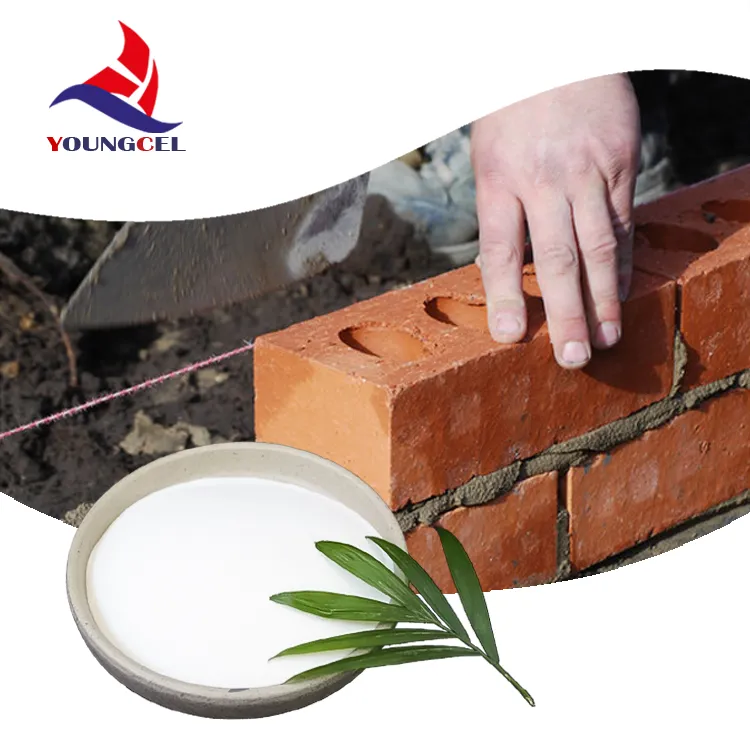The Role of Hydroxypropyl Methylcellulose (HPMC) as a Chemical Adhesive
Hydroxypropyl Methylcellulose (HPMC) is a versatile and widely used chemical adhesive known for its outstanding binding properties. As a non-ionic cellulose ether, HPMC is derived from natural cellulose and modified to enhance its performance in various applications, particularly in the construction, pharmaceutical, and food industries. This article explores the characteristics, applications, and benefits of HPMC in the realm of chemical adhesives.
Composition and Properties
HPMC is a chemically modified cellulose that features hydroxypropyl and methyl groups. This modification increases the solubility of cellulose in water, making HPMC an effective adhesive in various formulations. It exhibits excellent film-forming capabilities, ideal viscosity, and gel-forming properties, allowing for a stable adhesive matrix. Additionally, HPMC provides thermal stability and resistance to microbial growth, enhancing the longevity and durability of products in which it is used.
One of the standout characteristics of HPMC is its ability to form a transparent, flexible film upon drying. This property is crucial for applications where aesthetic appearance and flexibility are essential. Furthermore, HPMC is not only biodegradable but also safe for use in food, pharmaceuticals, and cosmetics, making it an eco-friendly choice for various industries.
Applications in Various Industries
1. Construction In the construction sector, HPMC is commonly used as a binder in tile adhesives, joint compounds, and textured coatings. Its water retention properties allow for extended working times and improved adhesion, making it easier to apply and ensuring that the finished product is durable and resistant to environmental stressors.
2. Pharmaceuticals HPMC is a key ingredient in many pharmaceutical formulations, especially in controlled-release drug delivery systems. It acts as a binder in tablet formulations and as a thickening agent in liquid formulations, ensuring a uniform consistency and improved bioavailability of active ingredients. Additionally, HPMC’s safety profile makes it ideal for use in products intended for human consumption.
chemic adhes hpmc

3. Food Industry In the food sector, HPMC is used as a thickener, stabilizer, and emulsifier. Its ability to form gels at low concentrations allows for improved texture and mouthfeel in a variety of food products. Moreover, its compatibility with other food ingredients makes it a preferred choice among food manufacturers looking to enhance the quality of their products.
4. Cosmetics HPMC is also prevalent in cosmetic formulations, where it is utilized for its thickening and binding properties. It helps in the creation of stable emulsions and improves the application characteristics of creams and lotions, ensuring a pleasant user experience.
Benefits of Using HPMC as an Adhesive
The use of HPMC as a chemical adhesive offers numerous benefits. Its non-toxic nature ensures safety in various applications, while its compatibility with a wide range of materials makes it an ideal choice for formulating adhesives in diverse industries. The versatility of HPMC allows manufacturers to tailor formulations to meet specific performance requirements, providing flexibility in product development.
Moreover, HPMC enhances the overall quality of various products. From improving adhesive bonds in construction to formulating effective drug delivery systems in pharmaceuticals, it serves as a critical component across multiple applications. Its biodegradable nature aligns with the growing demand for sustainable products, positioning HPMC as a forward-thinking choice in the adhesive market.
Conclusion
In conclusion, Hydroxypropyl Methylcellulose (HPMC) stands out as a significant chemical adhesive with a wide range of applications across industries. Its unique properties, coupled with its safety and environmental benefits, make it a material of choice for manufacturers looking to innovate while adhering to modern sustainability standards. As industries continue to evolve, HPMC is poised to play an integral role in future advancements in adhesive technology.
-
The Application and Significance of Construction RdpNewsMay.19,2025
-
Industrial Grade HpmcNewsMay.19,2025
-
Building Coating Adhesive Building Coating Adhesive HpmcNewsMay.19,2025
-
Application Of Hpmc For Detergent For Detergent In DetergentsNewsMay.19,2025
-
Application Of Hpmc Cellulose In Cement-Based MaterialsNewsMay.19,2025
-
Application Of High Quality Hpmc For Construction In The Field Of ConstructionNewsMay.19,2025




